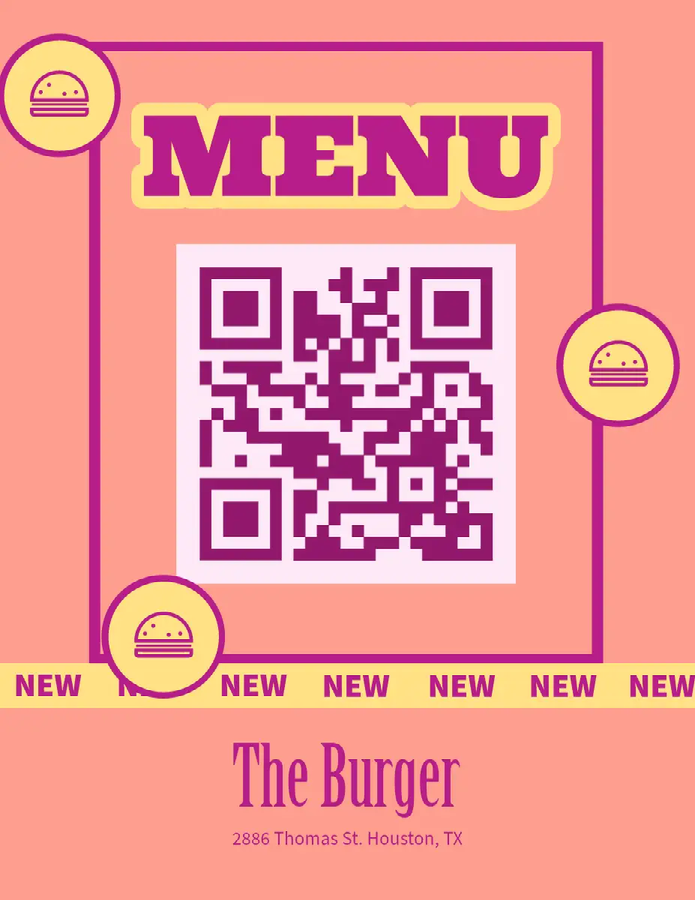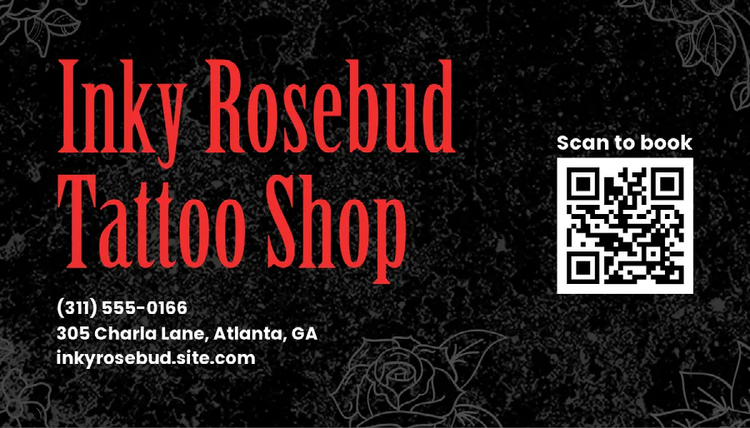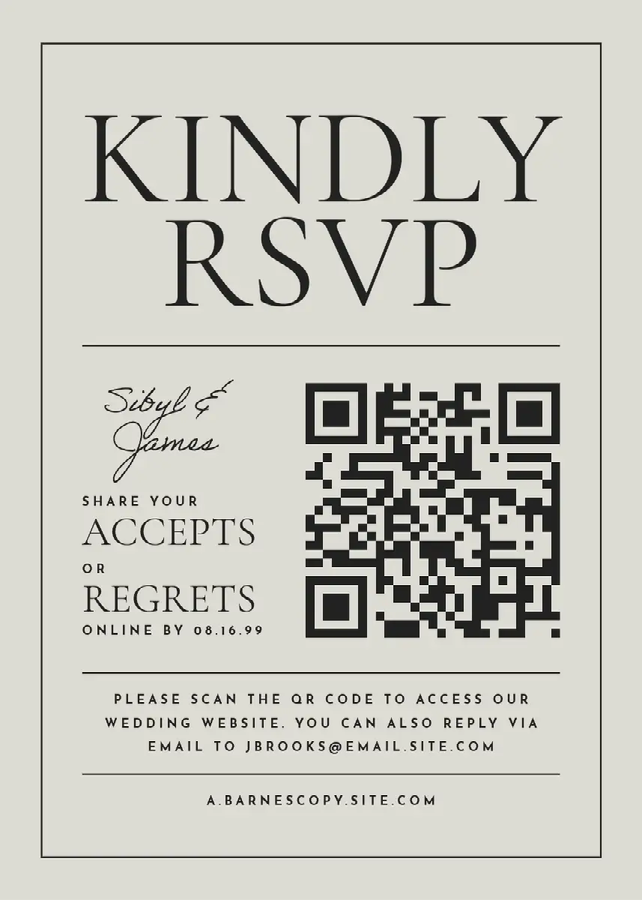How to use a QR code in your marketing strategy

In today's digital age, integrating QR codes into your social media marketing strategy can be a game-changer. These little black-and-white squares may seem simple, but they hold the power to connect an online audience with your brand in a whole new way. In this guide, we'll explore the fascinating world of QR codes and show you how to use these cost-effective tools in your social media campaigns to boost engagement, drive traffic, and enhance your overall marketing efforts.
Summary/Overview
How does a QR code work?
A QR code is like a digital key that helps boost your marketing strategy. It's a simple square with patterns that hold valuable information. By using QR codes, you can make it easier for your audience to connect with your brand and discover more about what you offer.
What is a QR code?
QR codes, short for Quick Response codes, are two-dimensional contactless barcodes that were originally developed in Japan for the automotive industry. They appear as a square-shaped grid of black and white squares and can be thought of as a physical hyperlink, connecting the physical world to digital content.
QRs are designed to be scanned quickly by smartphone users and can contain a variety of information like website URLs, contact information, and product details. They can also be used to initiate payments.
QR codes function like a barcode, but with the added advantage of being able to store more data. In fact, they were actually created with the intention of replacing barcodes. They are essentially a link that can be accessed by scanning the code with a smartphone camera, scanner, or QR code reader app.
QR codes are processed instantly and require a simple scan or click, making it easy for customers to access your online content and engage with your brand.
How is a QR code used?
QR codes connect the physical with the digital in both print ads and digital marketing, directing users to products, menus, campaigns, webpages, social media pages, and apps with a quick and easy scan from their smartphones. By instantly transporting users from a video to a product or another page, they enhance the user experience, making interactions smoother and more intuitive.
Dynamic QR codes offer an added layer of functionality. These can be edited and shared easily. They also allow you to collect valuable real-time data on customer behavior and preferences. You can track their performance – like the total number of scans – and adjust strategies based on the data they provide.
In social gatherings and events, QR codes simplify the check-in process, ensuring swift and hassle-free entry for guests. As such, they can be used for both in-person and online gatherings.
Shaping your strategy
To make the most out of QR codes in your marketing strategy, it's critical to have a clear plan in place. While QR codes can be a powerful tool for driving engagement and conversions, they need to be used strategically to be effective. Having a strong strategy will maximize the benefits of QR codes while aligning with the company's other advertising approaches.
Where you can publish QR codes
QR codes offer versatility in their placement, making them a valuable tool for connecting with your audience across a variety of mediums. They can be printed on physical materials like business cards, brochures, signage, billboards, product packaging, and posters, providing a tangible link to digital content. Alternatively, embedding QR codes on your website or sharing them on social media profiles allows for an easy transition from online browsing to specific products, pages, or information.
QR codes also add a fun, interactive touch to presentations, videos, and live events. They make it easy for the audience to engage right away. Additionally, incorporating QR codes into your direct mail or email campaigns can transform these traditional communication methods into interactive experiences, guiding recipients directly to your desired online content with a simple scan. Because QR codes are so dynamic, they can be used for a number of different use cases.
Weigh your QR code options
In the strategic implementation of QR codes into your marketing efforts, careful consideration of their placement and purpose is vital. Integrating QR codes on the tags or labels of your products can create a direct line to your social media, enriching the customer experience and building your online community.
Similarly, incorporating QR codes on printed marketing materials like brochures and posters transforms these traditional assets into gateways to your digital presence, specifically your social media channels.
Beyond the physical realm, embedding QR codes in videos or landing pages adds an interactive layer, easily guiding your audience to your social media. Conversely, using QR codes on social media to direct traffic to your website, apps, or online stores can streamline the user journey and potentially boost conversions.
Lastly, facilitating the movement between different social media platforms — whether it’s from a podcast landing page to Instagram, or from Facebook to the app store — QR codes can act as a swift connector, ensuring your audience can navigate through your digital ecosystem with ease.
Putting QR codes to work
Implementing QR codes into a marketing strategy requires attention to usability and design best practices. For customers to readily adopt and benefit from QR codes, marketers must make scanning easy and ensure the codes clearly connect to compelling destinations. Following certain design principles helps QR codes fulfill their potential to conveniently engage audiences and drive business objectives.
Decide how you will use QR codes
When you're starting to integrate QR codes into your marketing strategy, it's crucial to think about their purpose and how they can best serve your goals.
For straightforward promotion, you can create QR codes that take customers directly to a specific product, making the purchasing journey smoother. If you’re aiming to boost repeat purchases, embedding QR codes in electronic receipts or customer account summaries can provide a direct link back to the product. QR codes are also an excellent tool for offering discounts, special deals, or coupons, enticing customers with instant access to promotions.
Beyond direct sales, QR codes can be used to streamline communication, allowing customers to send a message, email, or access content like podcasts and videos with a single scan. You can also use QR codes to encourage customers to leave reviews, enhancing customer engagement and gathering valuable feedback.
Tips for making QR codes
Creating high-quality QR codes is essential for successful marketing integration. The following tips will help marketers generate codes that can be easily scanned by customers to reliably reach targeted online content.
- Proper proportions — Make sure your QR codes are large enough to be easily scanned. Small or blurry codes will frustrate customers.
- High contrast — Use high contrast between the foreground and background colors for best scanning. Black and white is ideal but dark colors on a light background also work well.
- Avoid inversion — Don't create a QR code where the foreground and background colors are inverted, as this can cause scanning errors.
- Crisp and clean — Generate your QR codes at a high resolution so they are crisp, clean images without pixelation. Low resolution or pixelated codes won't scan properly.
- Optimize the destination — The landing page the QR code leads to should be optimized for mobile with a clear call-to-action.
- Test before using — Don't deploy QR codes in marketing until you test that they can be successfully scanned and lead to the right destination from multiple devices. Proper testing can avoid customer frustration.
With these tips in mind, marketers can create QR codes that are easy and reliable for customers to scan, improving the overall experience. Try creating your own with the Adobe Express QR code generator.
Examples of successful QR code marketing campaigns
Exploring successful QR code campaigns provides valuable insights into how this technology can be used to engage and connect with audiences. Brands like Taco Bell, Netflix, and Heinz have effectively integrated QR codes into their strategies, showcasing the versatility and impact of this tool.
Taco Bell’s Doritos Locos Tacos
In 2012, Taco Bell partnered with Frito Lay to launch their Doritos Locos Tacos, which featured a QR code on the taco holster. When customers scanned the QR codes, they were directed to a mobile-optimized landing page where they could play a game and enter a sweepstakes for a chance to win prizes.
What made this campaign particularly interesting was its dynamic nature; the content linked to the QR codes was updated and changed every week. This approach kept customers coming back, eager to discover the new content that awaited them with each purchase. In fact, those QR codes are still printed on the Doritos Locos Tacos holsters and the content changes weekly.
By incorporating QR codes into their marketing strategy, Taco Bell was able to drive engagement, increase sales, and build brand awareness with their target audience.
Netflix’s Gilmore Girls pop-up coffee shops
To promote their Gilmore Girls revival in 2016, Netflix partnered with independent cafes across the country to create pop-up coffee shops designed to look like "Luke's Diner" from the series.
To drive engagement with their target audience, Netflix offered a particular QR code for Snapchat, known as a "Snapcode," that was printed on cup sleeves. Customers could scan the code with their smartphone to unlock a special Gilmore Girls filter on Snapchat, providing a fun and interactive experience.
This campaign was a huge success, with fans lining up outside the pop-up locations for a chance to experience the Gilmore Girls world. Netflix managed to capture their audience's attention and create an unforgettable experience through the strategic use of QR codes in their marketing.
Heinz “Join the Growing Movement” campaign
In the "Join the Growing Movement" campaign, Heinz brilliantly utilized QR codes to promote eco-friendliness and involve their customers in a meaningful cause. By placing QR codes on their product bottles, they provided customers with an easy and interactive way to participate.
When a customer scanned the QR code, they were led to make a pledge for a more sustainable lifestyle from a dropdown list and were encouraged to share their commitment on social media.
In response to each participation, Heinz committed to planting trees, making their customers’ actions contribute directly to a greener planet. This campaign not only promoted eco-friendly practices but also strengthened the community of Heinz customers, showing how QR codes can be a powerful tool for social good and brand engagement.
Through the use of QR codes, businesses can strengthen their connection with their target audience and increase engagement on social media. By incorporating QR codes into your marketing campaigns, you can provide a smooth user experience and make it easy for customers to access your online content. When creating QR codes, it's important to follow best practices like using high contrast, generating codes at a high resolution, and optimizing your landing page for mobile devices.
By following these tips and learning from successful examples like Taco Bell, Netflix, and Heinz, you can create effective QR codes that drive results for your business.





